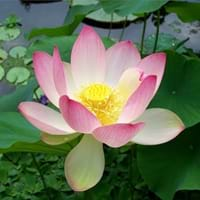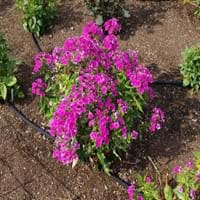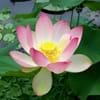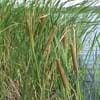Life Span
Perennial
Perennial
Origin
Southern Asia
Northeastern United States, Mid-Atlantic United States, Southeastern United States, North-Central United States, Central United States, South-Central United States, Canada
Types
Not Available
Blue Ice, Eventide, Starfire
Habitat
Ponds
Dappled Shade, Shady Edge, Woodland Garden
USDA Hardiness Zone
9-12
4-8
Sunset Zone
21,22
1a, 1b, 2a, 2b, 3a, 3b, 4, 5, 6, 7, 8, 9, 10, 11, 12, 13, 14, 18, 19, 20, 21
Habit
Clump-Forming
Upright/Erect
Minimum Height
Not Available
Minimum Width
Not Available
Flower Color
White, Red, Pink, Light Pink, Hot Pink, Rose, Coral
Purple, Magenta
Flower Color Modifier
Bicolor
Bicolor
Fruit Color
Non Fruiting Plant
Not Available
Leaf Color in Spring
Lime Green, Sea Green
Chartreuse, Gold
Leaf Color in Summer
Lime Green, Sea Green
Chartreuse, Gold
Leaf Color in Fall
Lime Green, Sea Green
Chartreuse, Yellow green, Tan
Leaf Color in Winter
Not Available
Not Available
Leaf Shape
Orbicular
Ovate
Plant Season
Summer, Fall
Summer, Fall
Sunlight
Full Sun, Partial Sun
Full Sun, Partial Sun
Type of Soil
Clay, Loam
Clay, Loam, Sand
The pH of Soil
Neutral
Acidic, Neutral, Alkaline
Soil Drainage
Poorly Drained
Well drained
Bloom Time
Late Spring, Early Summer, Summer, Late Summer
Summer, Late Summer, Early Fall, Fall
Tolerances
Wet Site
Not Available
Where to Plant?
Container, In Water, Pot
Ground
How to Plant?
From Rhizomes, Seedlings
Seedlings
Plant Maintenance
Medium
Medium
Watering Requirements
Requires 4 to 8 inches of water above the soil line
Average Water Needs, Doesn't tolerate standing water
In Summer
Lots of watering
Lots of watering
In Spring
Moderate
Moderate
In Winter
Average Water
Average Water
Soil pH
Neutral
Acidic, Neutral, Alkaline
Soil Type
Clay, Loam
Clay, Loam, Sand
Soil Drainage Capacity
Poorly Drained
Well drained
Sun Exposure
Full Sun, Partial Sun
Full Sun, Partial Sun
Pruning
Cut away fading foliage
Remove damaged leaves, Remove dead branches, Remove dead leaves
Fertilizers
20N–4.4P–16.6K at 20-d intervals
General purpose slow-acting granular fertilizer
Pests and Diseases
Aphids, Caterpillars
Powdery mildew, Rust, Septoria leaf spot, Stem canker
Plant Tolerance
Drought
Drought
Flower Petal Number
Single, Double, Semi-Double
Single
Foliage Texture
Bold
Medium
Foliage Sheen
Matte
Matte
Attracts
Beetles, Insects
Butterflies
Allergy
Constipation
Pollen
Aesthetic Uses
Beautification
Borders, Ground Cover
Beauty Benefits
Promotes healthy skin, Provides herbal hair care
Not Available
Environmental Uses
Air purification
Air purification
Medicinal Uses
Antidiarrhoeal, Astringent, Cancer, Cardiotonic, Febrifuge, Hypotensive, Resolvent, Stomachic, Tonic
No Medicinal Use
Part of Plant Used
Flowers, Leaves, Root, Seeds, Stem
Not Available
Other Uses
Leaves are used to wrap small parcels, Roasted seed is used as a coffee substitute, Root is used as a vegetable
Used as Ornamental plant
Used As Indoor Plant
Yes
No
Used As Outdoor Plant
Yes
Yes
Garden Design
Feature Plant, Tropical, Water Gardens
Cutflower, Feature Plant, Mixed Border, Wildflower
Botanical Name
NELUMBO nucifera
PHLOX paniculata 'Goldmine'
Common Name
East Indian Lotus, Sacred Lotus
Garden Phlox, Goldmine Phlox
In Hindi
पवित्र कमल
Goldmine Phlox
In German
Heiliges Lotus
Goldgrube Phlox
In French
Lotus Sacré
Phlox Goldmine
In Spanish
loto sagrado
Phlox Goldmine
In Greek
ιερή Lotus
Goldmine Phlox
In Portuguese
Lotus sagrado
Phlox Goldmine
In Polish
Sacred Lotus
Goldmine Phlox
In Latin
sacra Lotus
.org Phlox
Phylum
Magnoliophyta
Magnoliophyta
Class
Magnoliopsida
Magnoliopsida
Order
Proteales
Solanales
Family
Nymphaeaceae
Polemoniaceae
Clade
Angiosperms, Eudicots
Angiosperms, Asterids, Eudicots
Tribe
Not Available
Phlocideae
Subfamily
Nelumbonaceae
Polemonioideae
Number of Species
Not Available
Not Available
Importance of Sacred Lotus and Goldmine Phlox
Want to have the most appropriate plant for your garden? You might want to know the importance of Sacred Lotus and Goldmine Phlox. Basically, these two plants vary in many aspects. Compare Sacred Lotus and Goldmine Phlox as they differ in many characteristics such as their life, care, benefits, facts, etc. Every gardener must at least have the slightest clue about the plants he wants to plant in his garden. Compare their benefits, which differ in many ways like facts and uses. The medicinal use of Sacred Lotus is Antidiarrhoeal, Astringent, Cancer, Cardiotonic, Febrifuge, Hypotensive, Resolvent, Stomachic and Tonic whereas of Goldmine Phlox is No Medicinal Use. Sacred Lotus has beauty benefits as follows: Promotes healthy skin and Provides herbal hair care while Goldmine Phlox has beauty benefits as follows: Promotes healthy skin and Provides herbal hair care.
Compare Facts of Sacred Lotus vs Goldmine Phlox
How to choose the best garden plant for your garden depending upon its facts? Here garden plant comparison will help you to solve this query. Compare the facts of Sacred Lotus vs Goldmine Phlox and know which one to choose. As garden plants have benefits and other uses, allergy is also a major drawback of plants for some people. Allergic reactions of Sacred Lotus are Constipation whereas of Goldmine Phlox have Pollen respectively. Having a fruit bearing plant in your garden can be a plus point of your garden. Sacred Lotus has no showy fruits and Goldmine Phlox has no showy fruits. Also Sacred Lotus is not flowering and Goldmine Phlox is not flowering . You can compare Sacred Lotus and Goldmine Phlox facts and facts of other plants too.





